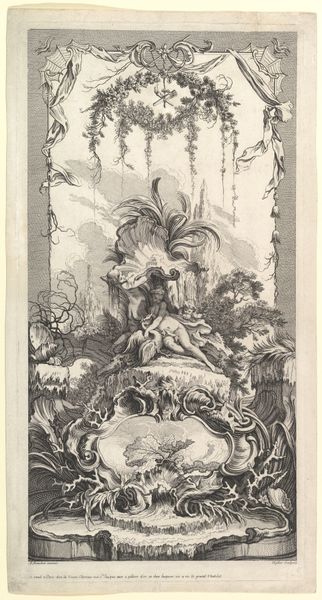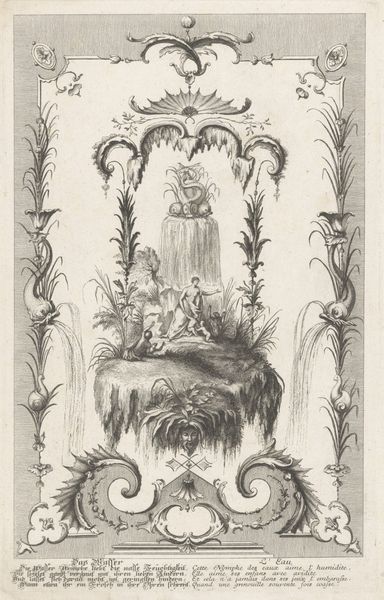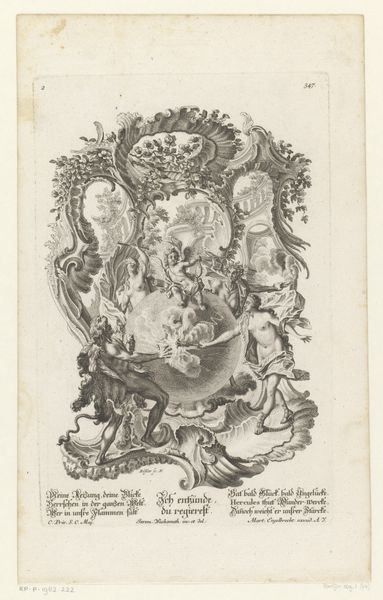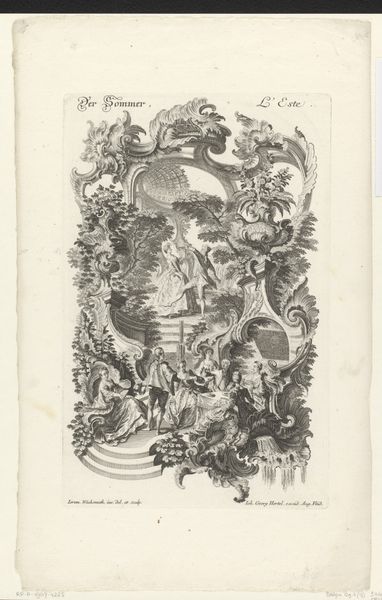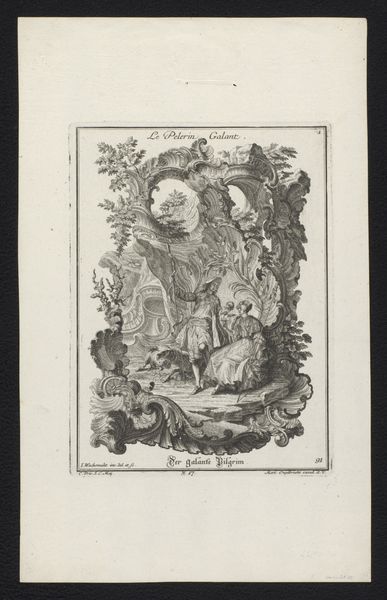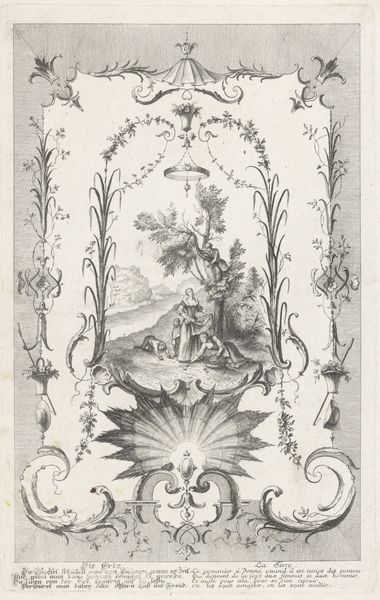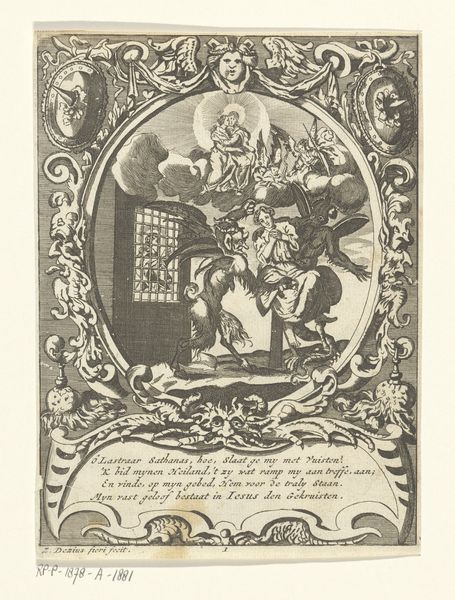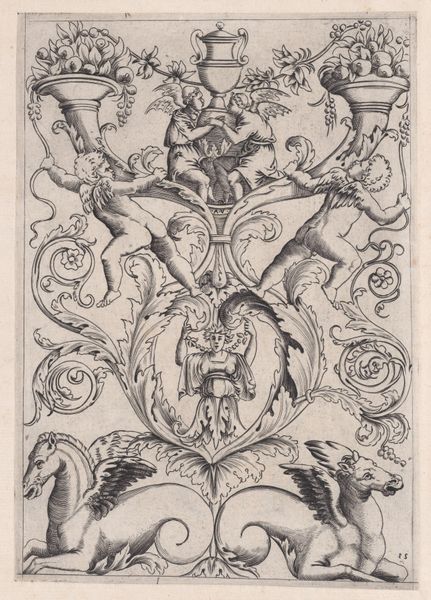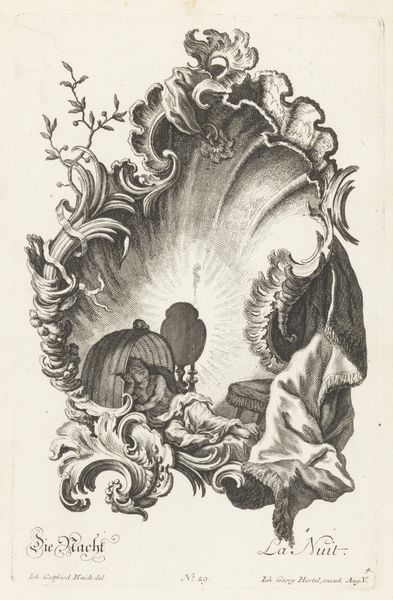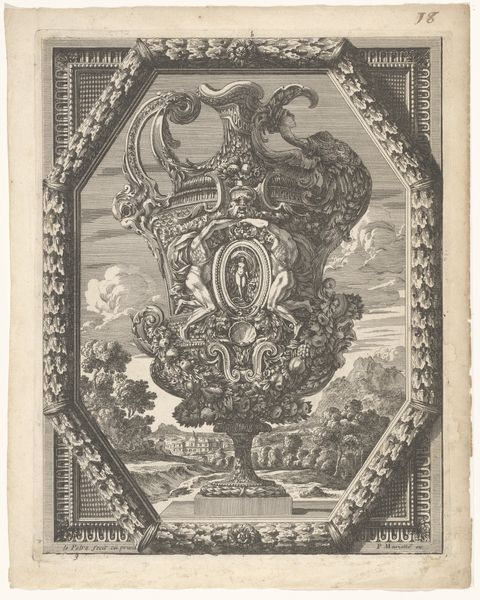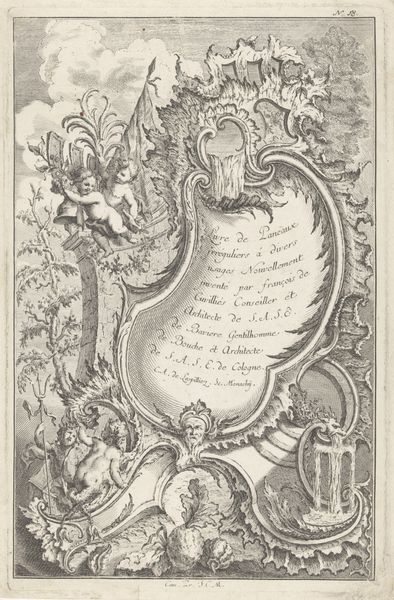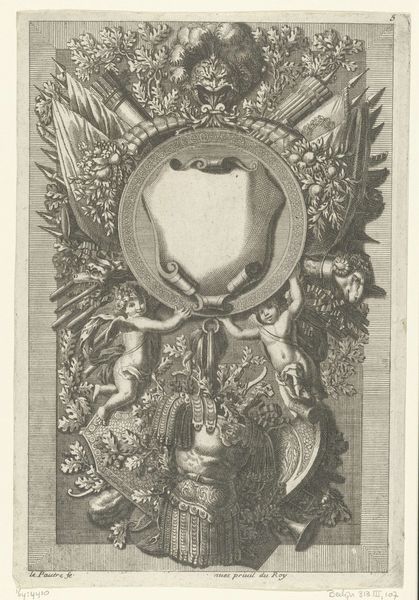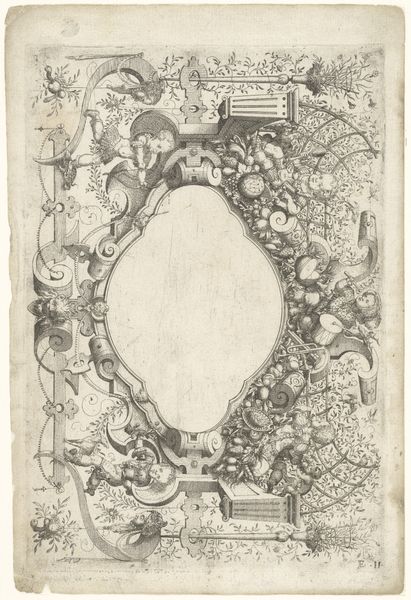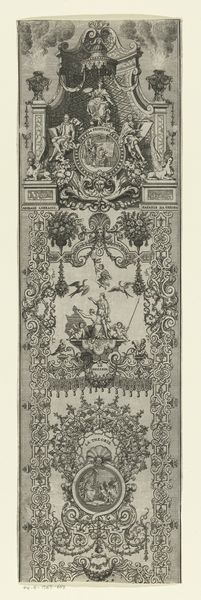
print, paper, engraving
#
portrait
#
germany
#
baroque
# print
#
paper
#
engraving
Dimensions: 340 × 235 mm (plate); 372 × 265 mm (sheet)
Copyright: Public Domain
Curator: Welcome. Here we have a remarkable engraving from 1701, "Portrait of Joseph I" by Christoph Elias Heiss, currently held at The Art Institute of Chicago. Editor: It’s… intense. Overwhelming, almost. The baroque certainly loves its embellishments! Curator: Absolutely. The artist utilized paper and the engraving process to achieve extraordinary detail, weaving a web of symbols. See how Joseph's portrait is framed? It's encircled with allegorical motifs. Editor: It seems like a feat to make such detailed work within printmaking itself. Look at the way all the text, framing, and illustrative elements become almost one material whole. But I find the combination unsettling, personally. Is all this imagery necessary to portray someone? Curator: In its era, the abundance wasn’t superfluous; each component resonated profoundly. The lions signify strength, and palm trees meant victory. The Latin inscriptions… Editor: So it's visual propaganda of a sort? This overwhelming display almost works against it; I'm too distracted by the excess to consider any singular message. All of this for political self-mythologizing! Curator: Perhaps, but consider it in terms of cultural memory. These recurring emblems form a symbolic language readily understood by his contemporaries. The power wasn’t just in portraying Joseph but in situating him within a tradition of leadership, strength, and perhaps divinely ordained rule through Amor and Timor – Love and Fear. Editor: And even fear becomes commodified here. I guess I prefer portraits which allow a bit more 'personality' of their subject to seep through the formal devices used. Curator: Indeed, artistic choices invariably reflect socio-political currents, in addition to their aesthetic purposes, wouldn't you agree? Editor: Yes. Considering the material means employed to produce this artwork alongside its symbolic language and possible socio-political aspirations really underscores what counts as art. Curator: By appreciating both form and symbols, we are really tracing lines connecting past to present. Editor: The material and symbols both reflect and mold the social narratives which are important.
Comments
No comments
Be the first to comment and join the conversation on the ultimate creative platform.
